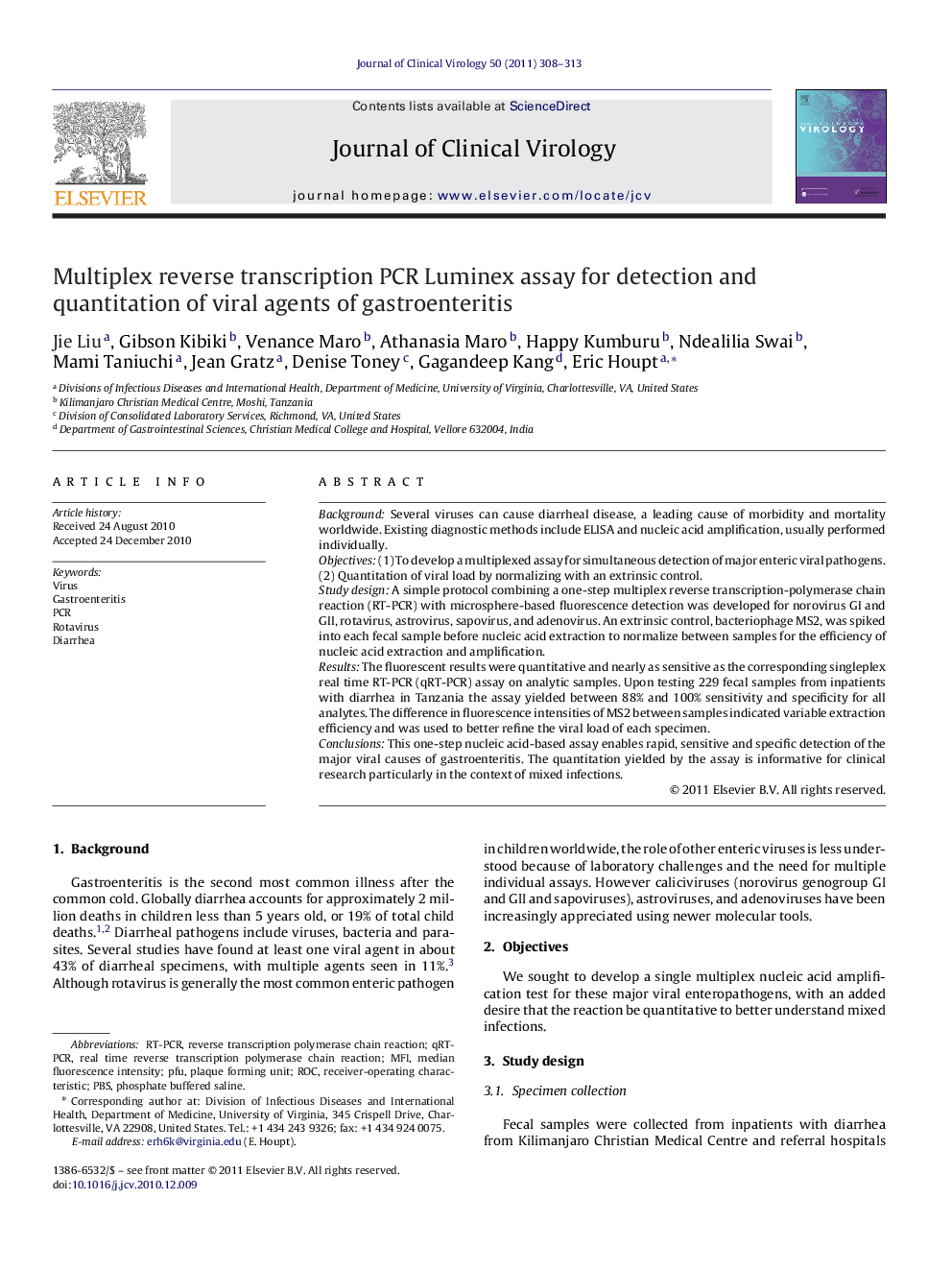| Article ID | Journal | Published Year | Pages | File Type |
|---|---|---|---|---|
| 3369150 | Journal of Clinical Virology | 2011 | 6 Pages |
BackgroundSeveral viruses can cause diarrheal disease, a leading cause of morbidity and mortality worldwide. Existing diagnostic methods include ELISA and nucleic acid amplification, usually performed individually.Objectives(1) To develop a multiplexed assay for simultaneous detection of major enteric viral pathogens. (2) Quantitation of viral load by normalizing with an extrinsic control.Study designA simple protocol combining a one-step multiplex reverse transcription-polymerase chain reaction (RT-PCR) with microsphere-based fluorescence detection was developed for norovirus GI and GII, rotavirus, astrovirus, sapovirus, and adenovirus. An extrinsic control, bacteriophage MS2, was spiked into each fecal sample before nucleic acid extraction to normalize between samples for the efficiency of nucleic acid extraction and amplification.ResultsThe fluorescent results were quantitative and nearly as sensitive as the corresponding singleplex real time RT-PCR (qRT-PCR) assay on analytic samples. Upon testing 229 fecal samples from inpatients with diarrhea in Tanzania the assay yielded between 88% and 100% sensitivity and specificity for all analytes. The difference in fluorescence intensities of MS2 between samples indicated variable extraction efficiency and was used to better refine the viral load of each specimen.ConclusionsThis one-step nucleic acid-based assay enables rapid, sensitive and specific detection of the major viral causes of gastroenteritis. The quantitation yielded by the assay is informative for clinical research particularly in the context of mixed infections.
